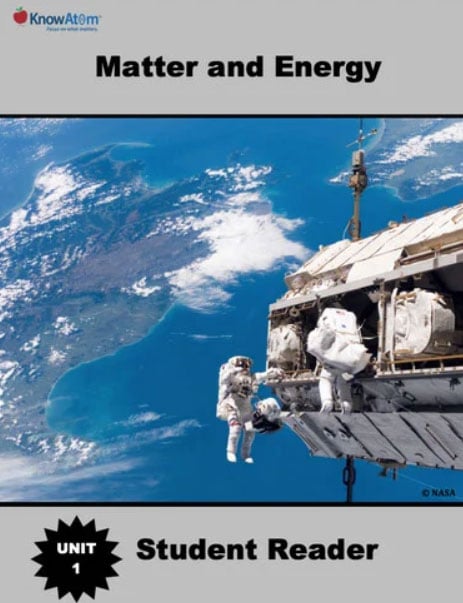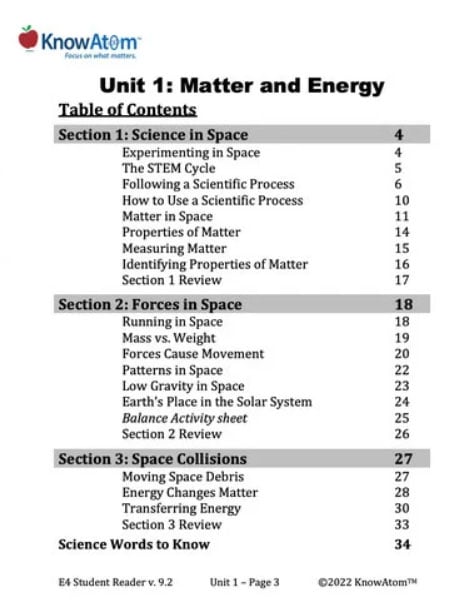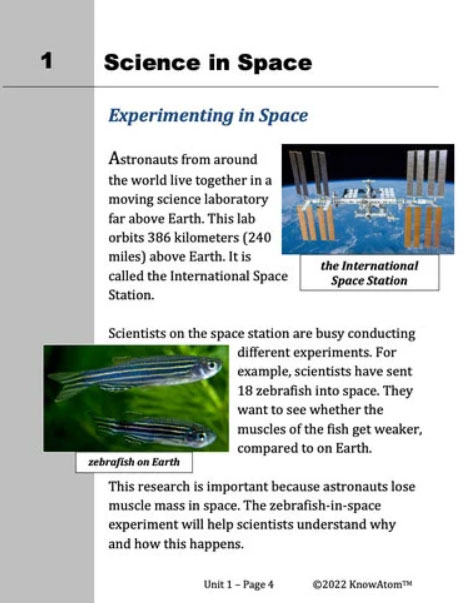Atom: the smallest piece of matter that has the properties of an element; a combination of three subatomic particles: protons, neutrons, and electrons
Cause and effect : a relationship between events or things, where one is the result of the other
Energy: the ability to do work (move an object, heat up an object, charge an object, etc.)
Force : a push or pull that acts on an object, changing its speed, direction, or shape
Friction: a force that slows motion whenever two objects rub against each other
Gravity: a force of attraction between all matter
Speed: the rate at which an object covers distance in a period of time; measured in meters per second (m/s)
System: a set of connected, interacting parts that form a more complex whole
Work: any change in position, speed, or state of matter due to force








